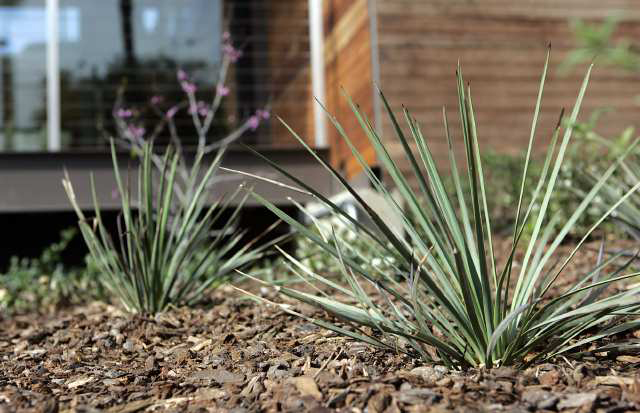|
Proper
soil condition and composition is important for an effective
landscape.
Soil amendments are often
required to ensure the ground is infiltrating and retaining water. A
soil analysis will indicate required amendments to promote targeted
plant life. In addition to landscape design, this process will also
facilitate designing a stormwater management plan. See the
soil amendments page for more
information.
Once vegetation and proper soil conditions have been established,
organic mulch (i.e. wood chips) or inorganic mulch (i.e. river rock)
should be utilized to control erosion and weed growth as well as
prevent water loss through evotranspiration. Inorganic mulch tends to
transfer heat increasing evotranspiration, but it rarely needs to be
replaced, therefore it would be most effective in areas that receive
little sunlight. Organic mulch keeps the ground and plants cooler;
however, it will occasionally need to be replaced.

Figure 4. Organic mulch around native plantings to conserve water
Irrigation system design and use should focus on the
most resourceful use of water as possible. The following guidelines
should be applied where feasible:
- Avoid watering during warm hours of the day. Morning and
evening watering prevents loss of water to evotranspiration.
- Time and control irrigation to ensure the right plants receive
the correct amount of water.
- Use efficient irrigation delivery devices such as drip systems
and micro-sprinklers.
- Where sprinkler systems are used, make certain water stays
close to the ground to avoid loss to the wind.
- Implement rain cisterns or barrels to collect and reuse
rainwater.
A landscape design that utilizes xeriscape principles is a
potential method to achieve the intent of LEED
WE Credit 1.1 and
WE Credit 1.2.
Refer to the LEED Guidance section for
specific requirements.

|

